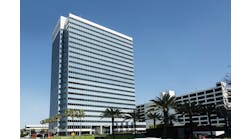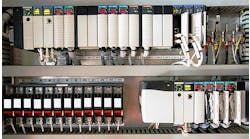How to address the need for higher speeds and increased modularity in IPC-in-cabinet design
Our panel of seven industry experts tackle the tough questions about the future of enclosures and how industrial PCs are affecting machine design.
The demand for higher speeds and increased modularity has created new challenges. How can these be addressed with an IPC-in-cabinet design?
John Kowal is director of business development at B&R Industrial Automation
Modularity on the HMI unit itself—for example, a concept where the screen, processor components and power supply are all separate entities—can ease the burden on replacements of failed components or potentially allow the user to easily upgrade to a newer processor or different screen type. If there were a case where the processor had failed or the screen was damaged, a replacement could easily be fitted to the existing HMI unit without having to remove the entire HMI and send it back to the factory for repair and replacement of failed components.
Aaron Severa is product manager, HMI/fieldbus, at Pepperl+Fuchs
Eric Reiner is industrial PC market specialist at Beckhoff Automation
Additionally, everything you can include inside the compute box engine requires less external connection and can be better controlled. For example, installing your WWAN radio inside an embedded PC eliminates the need to connect to an external WWAM modem, therefore creating one less likely failure point. The same can be said for external CAN transceiver modules, GPIO, Wi-Fi and storage.
Joe Bastulli is business development manager, embedded computing, at Dell
Chris Mason is product manager, industrial computers at Rockwell Automation
Another way to address challenges in design is the use of busbar power management. A copper busbar system provides reliable electrical power distribution, and it requires less panel modification and fewer contact points and wiring work. By eliminating power distribution blocks, line-side wiring and large, parallel cable runs, busbar systems save space and time for panel builders and increase contact hazard protection.
Steve Sullivan is training supervisor at Rittal
Tim Stone is HMI product sales manager at Advantech
ALSO READ: Control panel design starts with the basics
This is part two in a series about IPCs and enclosures. Read part one here and part three here.
Mike Bacidore is the editor in chief for Control Design magazine. He is an award-winning columnist, earning a Gold Regional Award and a Silver National Award from the American Society of Business Publication Editors. Email him at [email protected].
Homepage graphic courtesy of Suriya Kankliang at FreeDigitalPhotos.net













